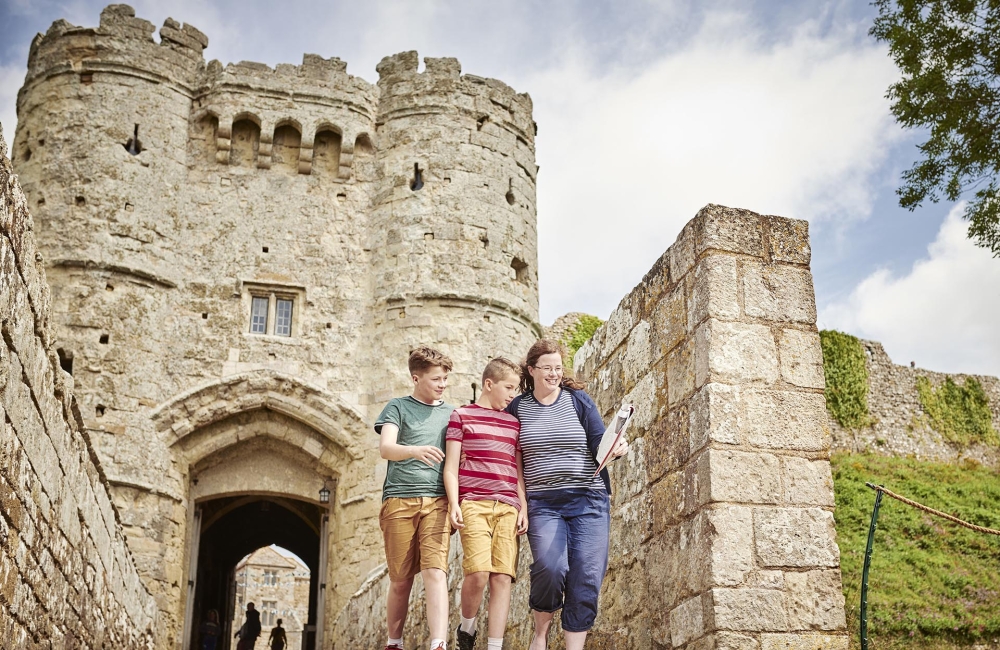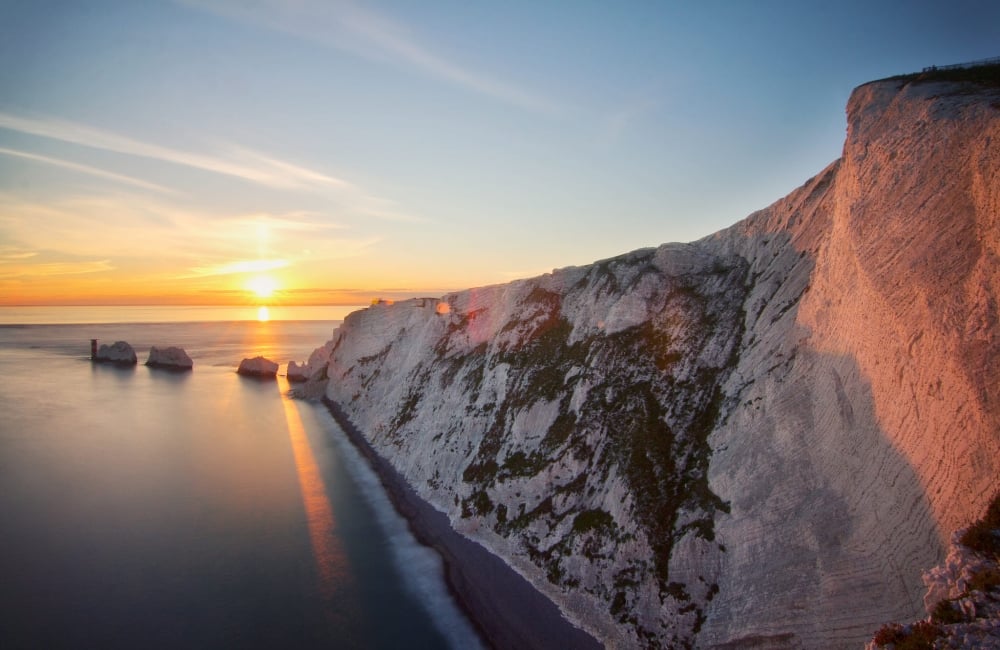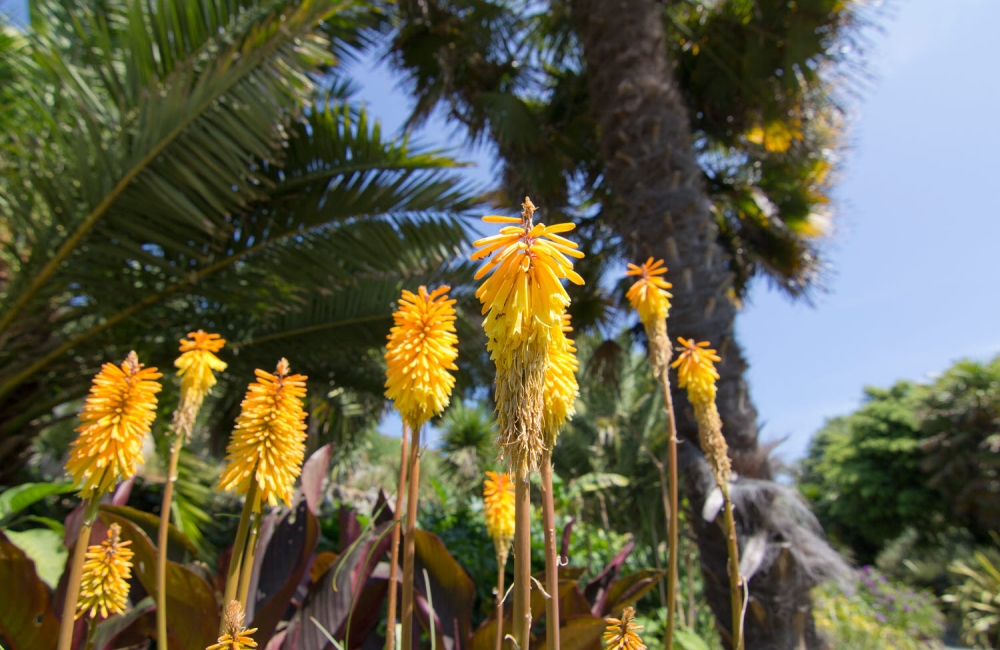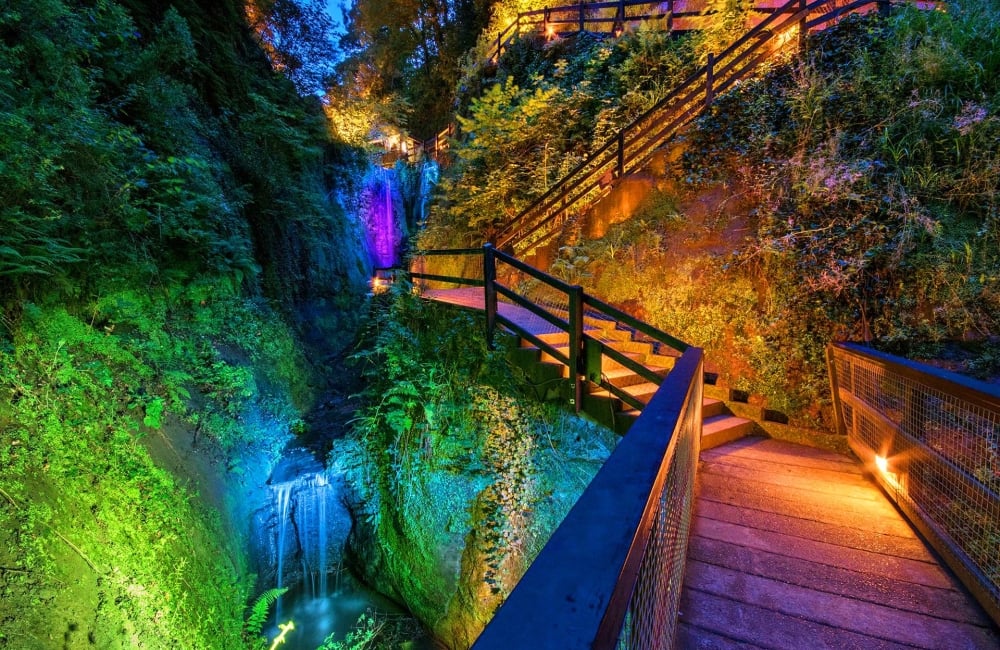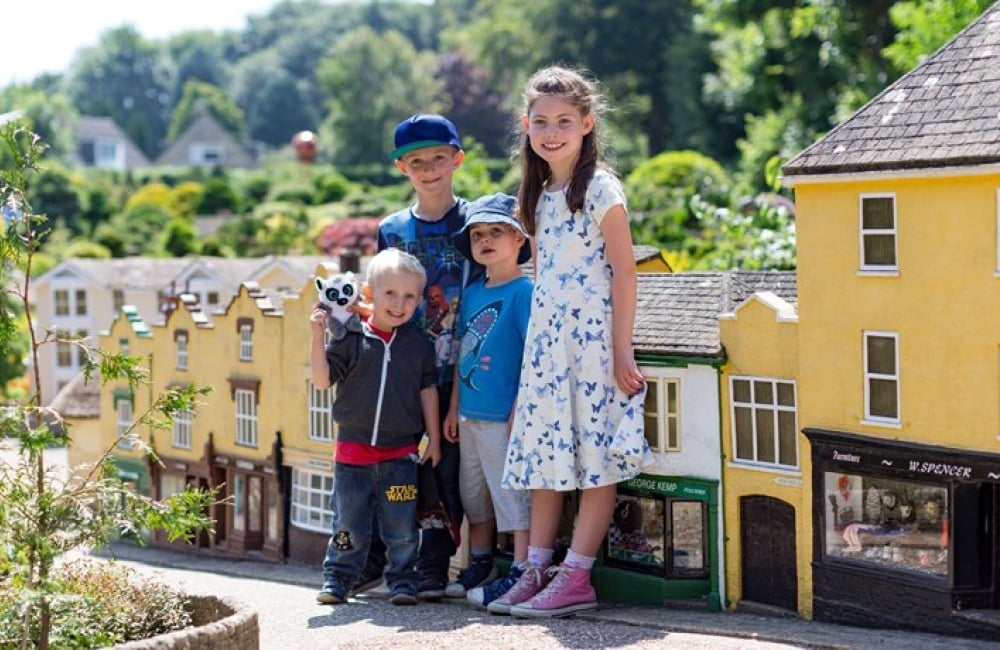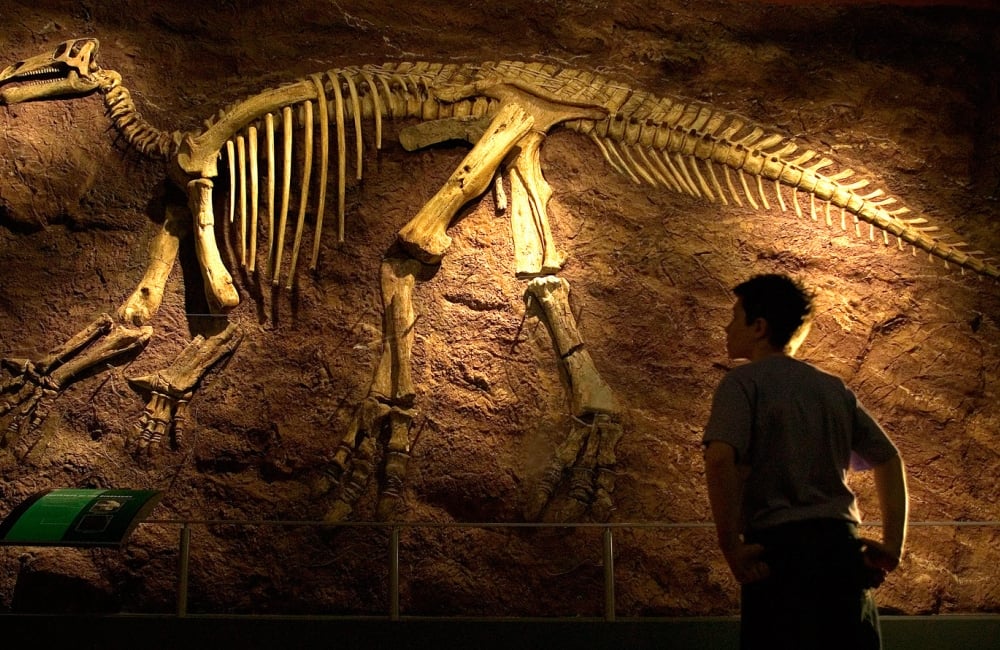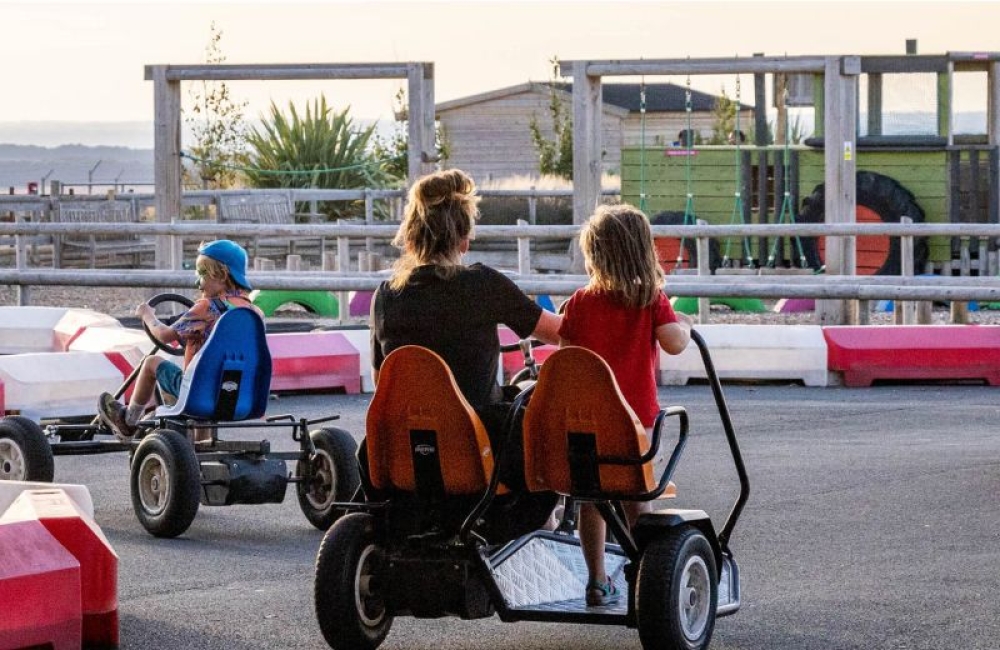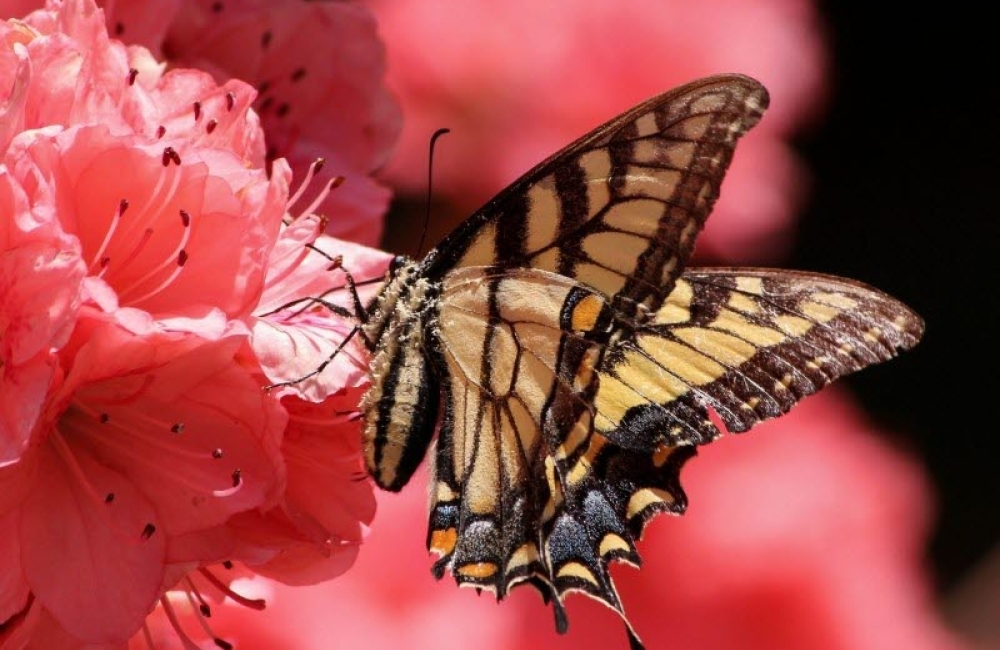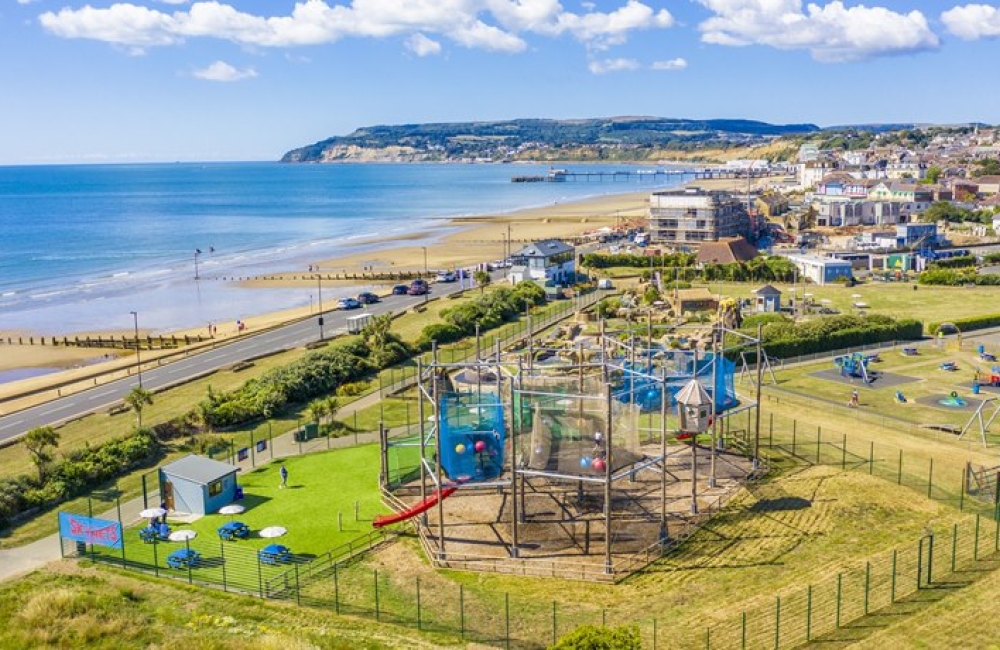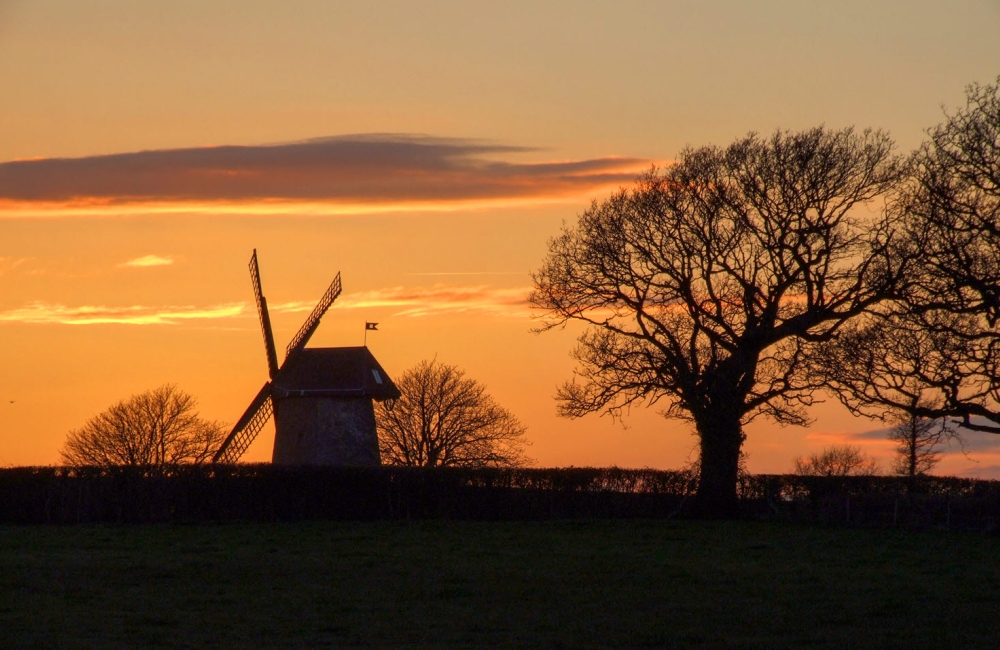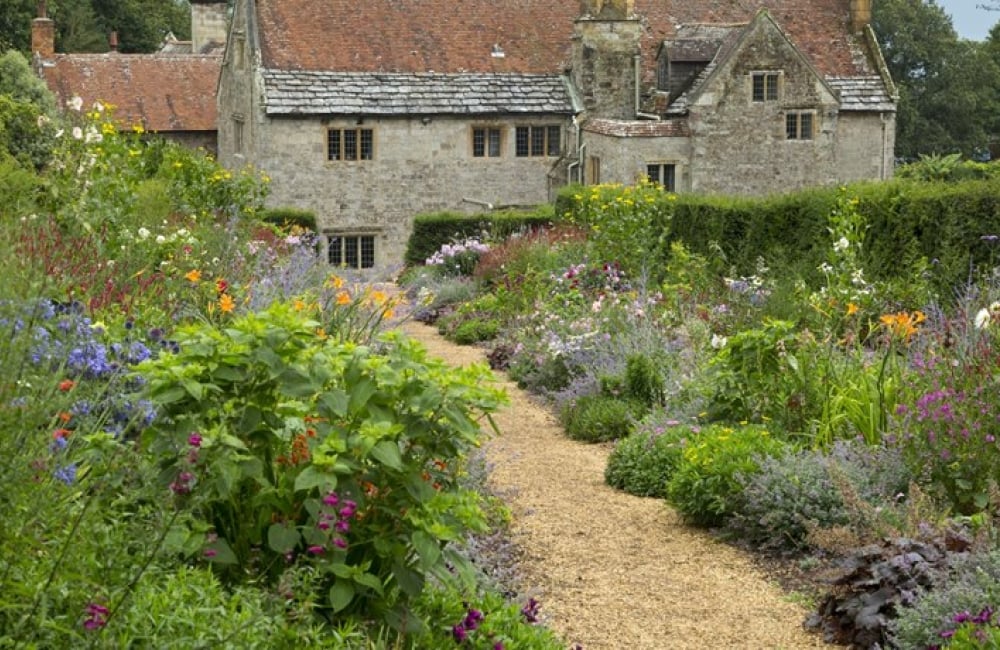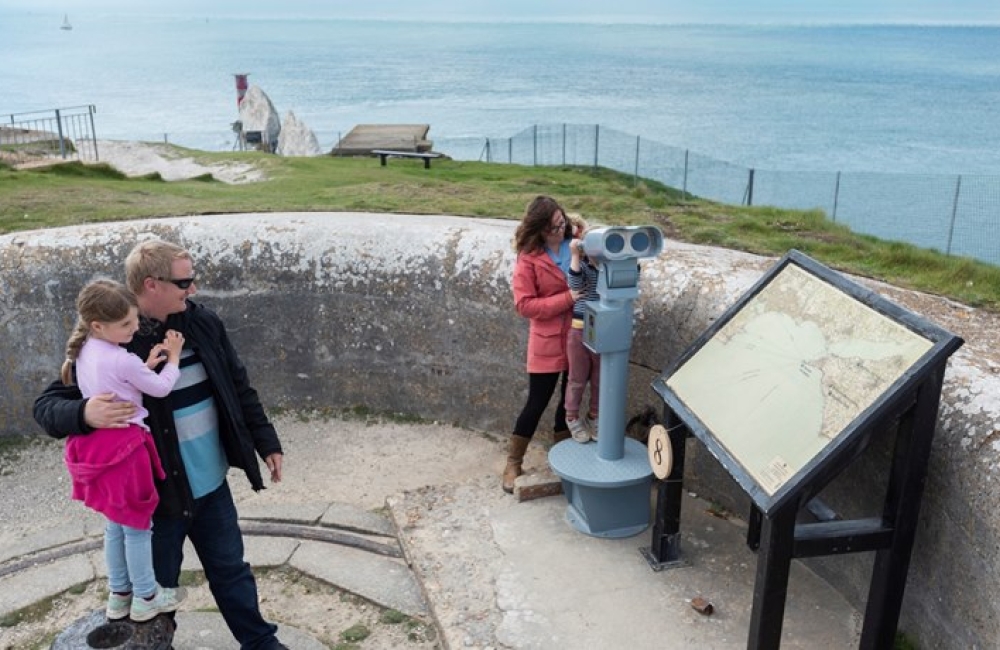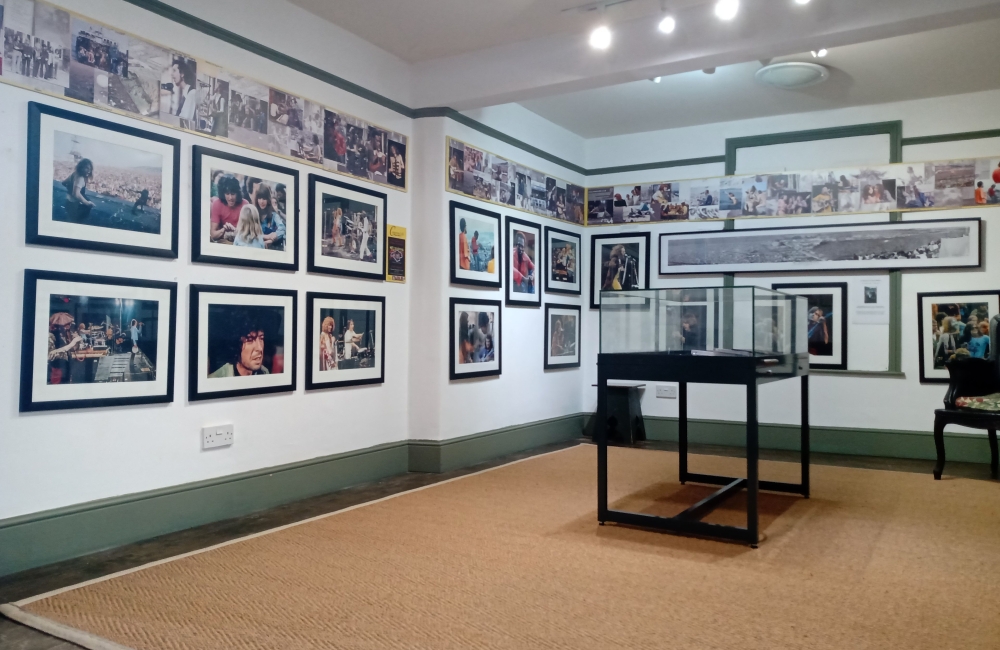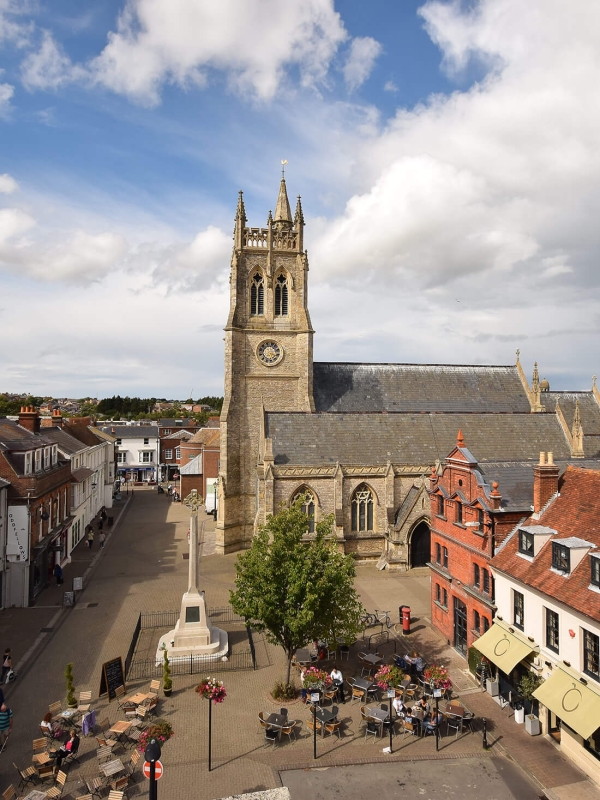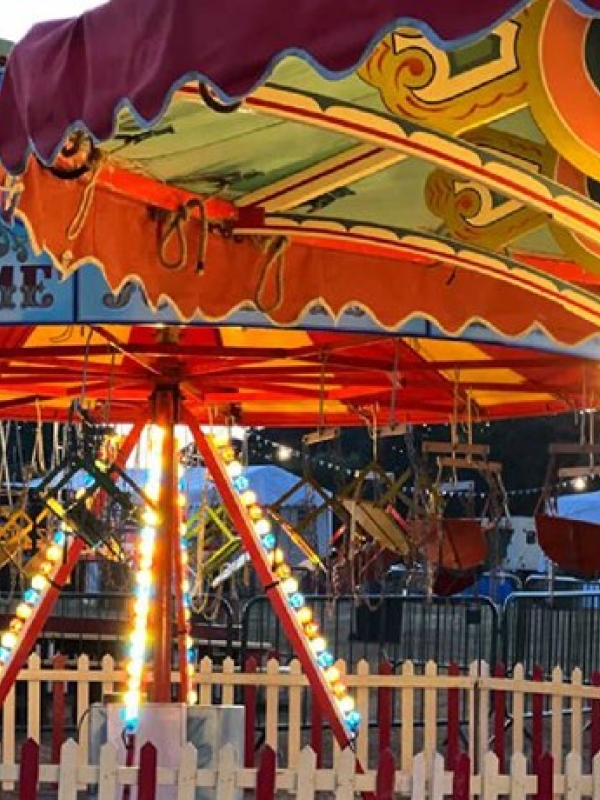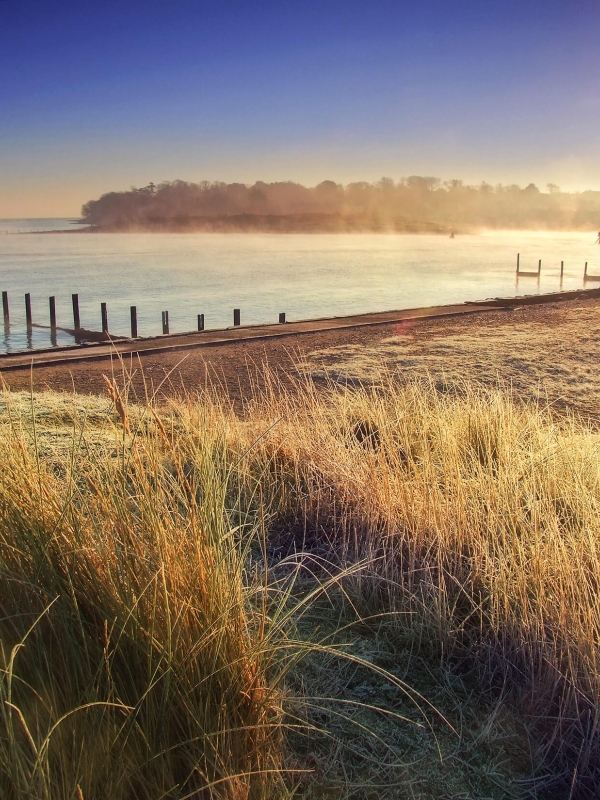Isle of Wight Attractions
Steeped in history, culture, and a little mystique, the Isle of Wight is packed with unforgettable things to see and do. Explore the coastline, get up close and personal (well, not too close) with local wildlife, tour museums, hunt for fossils, or catch a performance at one of the Island’s many festivals. Discover the local Isle of Wight attractions (many of which are free to visit!) and see just how much fun you can pack into your trip.
Apollo Theatre

The Apollo Theatre interior Apollo Theatre is a member of the Little Theatre Guild of Great Britain (LTG). The little Georgian building is a former Methodist chapel in Pyle Street, Newport, Isle of Wight, which was bought in 1970 and converted by a team of dedicated volunteers.
Arreton Barns

You could move into Arreton Barns Craft Village: there’s a fab farm shop, Farmer Jacks, you can buy tasteful homeware items in The Corn Exchange and there’s a great pub in the centre, The Dairyman’s Daughter. There’s even a Church, a village pond and loads of lovely shops to explore.
Cineworld

Situated in the centre of the Island, Cineworld Isle o fWight is easily accessible from the East Cowes ferry port. Follow signs to Newport and take the exit sign posted Town Centre off the Coppins Bridge roundabout. The car park to the rear of the building is free only after 20:00. There are 5 designated spaces for disabled parking.
The 11 screen cinema showing all the latest film releases in 2D and some in real 3D. They also provide autism friendly screenings and special screenings on saturday mornings for the little ones.
Glory Art Glass

Glory Art Glass in Sandown is a popular stop on the tourist trail and only a stone’s throw from the beach that inspires a lot of the work that is made in the studio. Housed in a huge old garage, with light pouring in through the big windows, the studio is spacious and light with a mix of traditional and modern fittings giving it an eclectic feel. Behind the counter you can see Ed Evans and his father Martin gathering, blowing and moulding glass into the amazing creations on sale in the shop.
Isle of Wight Pearl

A treasure trove awaits you at Isle of Wight Pearl, pick your own pearl, or buy a beautiful piece of jewellery, all the while soaking up the amazing views of the West Wight coastline. Treat yourself to a glorious Cream Tea, delicious lunch or a piece of homemade cake at The Pearl Cafe - just the spot to relax and revive before your next adventure!
Isle of Wight Studio Glass

Now relocated and established at a new home in Arreton, Isle of Wight Studio Glass has a state of the art studio where you can watch their wonderful glass creations being brought to life. Founded in a converted stone barn in St Lawrence in 1973 by Michael Harris and his wife Elizabeth, the studio is now run by their son Timothy and the business moved to Arreton Barns Craft Village in 2013.
The Sir Max Aitken Museum

Housed in the former 18th Century Ratsey and Lapthorn sail maker's loft, this splendid museum conveniently located in Cowes High Street, holds Sir Max Aitken's personal collection of magnificent marine paintings and historic nautical artefacts. The museum is a 'must see' for visitors to Cowes who is interested in art, history, royalty and the famous sport of yacht racing.
Medina Theatre

Seating an audience of 425 the theatre hosts a large number of both local and national plays, concerts, ballets and lectures throughout the year, catering for a large cross section of the community
The Box Office is also open one and a half hours before any performance is due to start. Tickets can be reserved for each performance with full payment. Bookings can only be held for 24 hours, within seven days of the performance. We accept credit cards, debit cards, cash or cheques made payable to Medina Theatre.
Osborne

Osborne was the much loved retreat of Queen Victoria and Prince Albert. You can visit Victoria and Albert's private apartments, their bathing beach and children's play-cottage for an intimate glimpse of royal family life. Then stroll through the garden terraces where the stunning views across the Solent reminded Prince Albert of the Bay of Naples.
Quay Arts

Newport Quay was once a bustling, noisy place. Barges carried goods up and down the River Medina, which was lined by warehouses. Where the dual carriageway is today, there was a sliding railway bridge over the river that opened so the barges could unload their cargo on the quay or leave for the mainland on the tide.
After several rebuilds, Quay Arts had it's most recent refurbish in 1997 by award winning architect Tony Fretton. The new facilities include three galleries, a 134-capacity theatre, a Crafts Council-listed gift shop and popular Café Bar with a reputation for serving some of the best home-cooked food on the Island. Business conferencing facilities are also available, and the Centre is licensed for weddings and civil partnerships.
Quay Arts has built a great reputation for showing contemporary arts and music as well as comedy and talks. Courses and workshops are also held here.
Shanklin Theatre

Shanklin Theatre is open throughout the year where it hosts events ranging from a Christmas Pantomime, a professional summer season, local amateur dramatics, a children's stage school, the Isle of Wight Dance Festival and workshops for visiting school parties.
Shanklin Theatre was formerly known as The Institute and opened in 1879. In 1884 new rooms were added, the Reading Room and Amusement Room. Visitors were charged 1d to use the Reading Room and this was housed in the lower section of the building to the right of the main front facade. The Amusement Room had two billiard tables and was managed by the Shanklin Chess Club.
In 1913 the Council ordered that the words Institute and Reading Room be erased from the building and it then became The Town Hall.
In 1925 a serious fire occurred, which seriously damaged the Institute, but not the Town Hall. After much deliberation by the Shanklin Urban District Council, approval to proceed with reconstruction was given in 1932.
During World War Two the Theatre was used for dances and many other kinds of entertainment.
After the war the Theatre came into its own with the Barry O'Brien Company putting on repertory plays every week of the summer season, and on Sundays there would be concerts shared with Sandown Pavilion, to include many famous names of the era.
Dimbola Museum & Galleries

If you love photography, history, literature and style the former home of pioneer photographer Julia Margaret Cameron (JMC), in Freshwater is for you.
Adgestone Vineyard

Rumour has it that the Romans produced wine near to Adgestone Vineyard and the south facing chalk downland here certainly produces a good vintage. You can sample them all in the café or on the outdoor terrace, after your tour around the vineyard, accompanied by a tasty snack or sharing platter.
Appuldurcombe House & Grounds

Begun in the early 18th century as the seat of the Worsley family, Appuldurcombe was once the grandest house on the Isle of Wight. Appuldurcombe was a masterpiece of English Baroque architecture, and though now a graceful shell, still retains more than a ghost of its former dignity, and many fine architectural details. The celebrated landscape designer 'Capability' Brown enhanced the rolling grounds in the 1780s, and the Capability Brown Festival 2016 celebrates the 300th anniversary of his birth.
Farringford

The beautiful Grade 1 listed Farringford was the home of renowned Victorian poet Alfred, Lord Tennyson from 1856 until his death in 1892. In this secluded spot, Alfred and Emily Tennyson found a retreat from the clamour of London life and viewed the tranquility and intimacy of their remote island home as the perfect place to raise their two sons. The Gothic house and gardens have recently undergone extensive restoration and have re-opened to the public as an historic home, decorated in a style that reflects Tennysons' tastes, interests and lifestyle. Farringford also features in the new Literary Heroes Trail.
Nunwell House and Gardens

A house for all eras might be the best way to describe Nunwell House as it is an attractive patchwork of different parts from the earliest, built in the fifteenth century, through to the Victorian music room added in 1906. A family home since 1522, the House is currently owned by Rosie and Stephen Bonsey who welcome visitors, offering guided tours of the house and gardens to enjoy its history and beauty.
Godshill Model Village

As featured on BBC's Countryfile, you musn't mistake the model village in Godshill as purely a children’s attraction because this vintage gem is an amusement for all ages. Set in a garden full of stunning coarse bonsai trees, you will love this 1/10th model of the village of Godshill and Shanklin Old Village and Chine.
Butterfly World

Is there anyone who doesn’t like butterflies? Huge, beautiful butterflies and moths from around the world fly around you at Butterfly World with fabulous markings and stunning colours. Another unexpected find in this indoor attraction is the wildlife garden and a Discovery Zone.
Mottistone Gardens

If you love gardening and visiting established gardens then Mottistone Gardens, with their semi tropical planting, are a must see on your holiday itinerary.
Ventnor Botanic Gardens

Discover the wonderful sub-tropics right here in Britain’s hottest garden. Basking in the warmth of the unique micro-climate of Ventnor Undercliff, uncover the wonder and beauty of Ventnor Botanic Garden. With over 200 plants in bloom 365 days a year and something for all the family don’t miss Britain’s Hottest Garden!
Brading Roman Villa

Brading Roman Villa is one of the finest Roman sites in the UK. The award winning Visitor Centre and Museum offers a unique insight into Roman life in Britain from beautifully preserved mosaic floors to an extensive collection of Roman archaeology. The Forum Café is open daily with plenty to tempt you, whether just a delicious homemade cake, sandwich or a hearty favourite from the specials board.
Calbourne Water Mill

As pretty as a postcard and with hours of fun for everyone, you can see how flour is made at Calbourne Water Mill, the last working mill on the Isle of Wight. Then punt on the mill pond, wander the war museum and hand feed the large collection of wandering birds.
Carisbrooke Castle

When searching for great places to visit, you can't beat a good castle to feel the adventure and soak up the local history. Located in the middle of the Isle of Wight stands the historic 10th century Carisbrooke Castle. This motte and bailey castle was where King Charles I was kept imprisoned for 14 months leading up to his execution by the Parliamentarians in 1649.
Classic Boat Museum

Vintage lovers must make a visit to the Classic Boat Museum in East Cowes where the collection of boats will transport you back to the days of messing about on the river or glamming it up on the Riviera, the austerity of wartime Britain and breaking records in the 1950s and 60s.
Newtown Old Town Hall

Newtown Old Town Hall was built in 1256, and is the town hall of the former mediaeval and later rotten borough of Newtown on the Isle of Wight. Newtown is now a small village, and its town hall is owned by the National Trust. It is a Grade II listed building.
After many years of neglect the building was repaired in 1933 under the supervision of John Eric Miers Macgregor OBE, a specialist conservation architect who managed to save the derelict structure. The repair was funded by Ferguson's Gang, a mysterious group of young annonymous benefactors who endowed Newtown Old Town Hall to the National Trust and agreed for it to be run as a Youth Hostel for fifteen years.
An exhibition of the exploits of the Gang can be seen in the building today, which is open to the public during the summer months, for a small admission fee.
The Gang were influenced to save the Old Town Hall by Black Mary, a supporter of Ferguson's Gang and the mother of Peggy Pollard (AKA Bill Stickers) whose home on the Island was close by.
Quarr Abbey

For a slice of quiet contemplation, Quarr Abbey, a working monastery on the Isle of Wight, is a wonderful place to soothe the soul. It is not just an architecturally beautiful church - there is much more than meets the eye – roaming pigs, café, farm shop, book shop, art gallery and for the first time in its history, very modern ‘monastic internships.’
St Catherines Lighthouse

With a light that can be seen for 25 nautical miles, St. Catherine's Lighthouse provides a crucial waymark for vessels navigating in the English Channel and a guide to vessels approaching the Solent. The lighthouse comprises a white octagonal tower and is now monitored and controlled from Trinity House's Planning Centre in Harwich.
The present tower was constructed in 1838 following the loss of the sailing ship Clarendon on rocks near the site of the present lighthouse. The station survived the Second World War but was hit by a bombing raid on 1 June 1943 which destroyed the engine house killing the three keepers on duty who had taken shelter in the building. They are all buried in the local cemetery at Niton village and a plaque in remembrance of them is displayed on the ground floor of the main tower - the damage caused by the bullets can still be seen today.
Yarmouth Castle

What’s Yarmouth’s best kept secret? It’s Yarmouth Castle, so make sure you don’t miss it when you visit this sleepy little port. Henry VIII was so worried about invasion, he built this castle. It’s not hard to find, just a few steps from the George Hotel, down a short passageway.
Bembridge Windmill

You'll have a real time travelling experience when you visit Bembridge Windmill, the only surviving windmill on the Isle of Wight. Fully restored after being given to the National Trust in 1961, it's so pretty it even inspired Turner to paint a watercolour when he visited the island in 1795.
Dinosaur Isle

Dinosaur Isle in Sandown offers an unforgettable interactive dinosaur experience. Hear the roar of a dinosaur, smell a real Cretaceous park and watch the experts at work in the laboratory.
Isle of Wight Steam Railway

The sight of a steam train puffing its way around the countryside is the stuff of romantic memories and brings wonder to adults and kids alike. What's not to like about being able to ride one of these amazing antique trains and to relive the glorious days of steam travel?
Shanklin Chine

The oldest attraction and largest Chine on the Isle of Wight has been at the forefront of many childhood holiday memories. Walking along the pathways that follow the naturally craved out ways along the cliff edge is reminiscent of a faraway land.
The Needles Old and New Battery

The scariest view of the Needles rocks from a lookout point right at the tip of the cliffs is your reward for climbing down the spiral staircase and then creeping through a 65m underground tunnel at the Needles Old Battery. Or you can stay at the top and have 360 degree views.
The Shipwreck Centre & Maritime Museum

The Shipwreck Centre and Maritime Museum has the Isle of Wight's most extensive collection of fascinating artefacts that have been discovered over the years by dedicated diver Martin Woodward. A truly fascinating Island attraction visitors of all ages will enjoy.
Wight Military & Heritage Museum

Calling all veterans, vintage lovers and war history buffs! You must visit the Wight Military and Heritage Museum as it’s full of stuff you’re going to love. At certain times you can also have a go at Air Rifle Shooting, an extra charge applies and please check to see if available during your visit.
Alverstone Mead Nature Reserve

Highland cows graze upon it, wildfowl swim through it and there are hosts of squirrels in the trees around Alverstone Mead. This 30 acre nature reserve is beautifully kept and much loved by those who visit, under the care of the Wight Nature Fund the Mead is flourishing in its marshy splendour.
Brading Marshes – RSPB’s reserve on the Island

Reversing the drainage of Brading Marshes has been the key to providing the environment needed to encourage birds back to this expansive bird reserve – the RSPB's first on the Island, bought in 2001.
Newtown Nature Reserve

It’s hard to believe that this small hamlet was the Island’s capital port and town between 1256 and 1377, as a quiet riot of nature has now reclaimed most of it.
Park at the National Trust visitor point and you can take two mapped walks: one to see the picturesque harbour with its former saltpans to the northwest or another to see the pretty woods, meadows and the old town quay to the northeast.
The harbour walk takes you through the village, past the church and Marsh Farm and down to a superb bird hide. If you become a friend of Newtown National nature reserve you can use this hide all year round – contact the National Trust Office.
Tapnell Farm Park

Set in beautiful countryside, surrounded by amazing views of the Island and the Solent, Tapnell Farm is an award-winning, all weather attraction – perfect for a family day out!
Formerly a dairy farm, Tapnell Farm is now one of the Island’s biggest tourist attractions, providing so much to see and do, with just as much activity indoors as out.
Monkey Haven

Monkey Haven is the Island’s Number 1 attraction where you can meet adorable rescued gibbons, monkeys, birds of prey, meerkats and reptiles. There’s lots of fun for everyone at the award-winning sanctuary, including a fun free App and wonderful keeper talks.
Wildheart Animal Sanctuary

What a treat to get to see some of the most vulnerable big cats in the world, rescued into their forever home. Will you see the King of the Jungle, Casper, who is often found surveying the scene below from his favourite rock? With many more furry and feathered friends to visit the Wildheart Animal Sanctuary is a fabulous place to visit.
West Wight Alpacas

With a herd of over 70 unique Suri alpacas and wooly Suri Llamas and set in 23-acres of picturesque countryside, West Wight Alpacas is the place to visit and how can you not fall in love with these gorgeous animals?
Amazon World Zoo Park

Everyone loves to visit a zoo, especially if you can get up close and personal with the friendlier animals. At Amazon World you can be introduced to the animals in a keeper talk, walk-through the Lemur and Wallaby enclosures where you can interact with them, or you could meet a Meerkat.
Blackgang Chine

Explore a world like no other in the Land of Imagination at Blackgang Chine where you truly can be whoever you want to be. A courageous dinosaur keeper in Restricted Area 5; a magical fairy in Fairyland; or an outlaw or sheriff as a rootin’ tootin’ cowboy in Cowboy Town; a swashbuckling pirate in Pirate Cove; or come face to face with a 60ft whale as a deep sea diver in Underwater Kingdom…where will your imagination take you?
Karting @ Wight Karting

Wouldn’t you love to be a racing car driver for one day? That’s just what you can be at Wight Karting where the whole go karting experience is taken up to top notch – you even get to wear a race suit and your lap times are all recorded.
Robin Hill

Why we love Robin Hill so much is simple to answer – it has so much to offer and is totally unbeatable on the fun stakes (not just for the kids either). Discover the rolling parkland, natural woodland and countryside gardens for exploration, adventure and entertainment. Not only that but the park comes alive throughout the year for an incredible calendar of daytime and evening events.
Sandown Pier

The End of the Pier is open from Easter and has something for the whole family. Dodgems, Snake Slide, Ball Walkers, Quad Bikes and Tea Cups. There is a Cafe, Burger Bar and Ice Cream Kiosk and at the front of the pier is Scruffy Jacks Sports Bar with stunning views of the bay.
Amusements
All that you'd expect from a traditional pier including video games, kids rides, slot machines, novelty games and crane grabs.
Rides
Dodgems, a snake slide, teacups and many more rides that are sure to keep the kids entertained!
Food & Drink
A cafe at the entrance to the pier sells a range of snacks and the burger bar has freshly made donuts.
Fishing
Great fishing is available from the end of Sandown pier throughout the summer. See what you can catch!
The Pier is truly a whole day's fun in one!
Shanklin Seafront

Shanklin Seafront really is like a traditional amusement pier, just turned 90 degrees and placed on land. Whether you're visiting the Isle of Wight on a short day trip and you are looking for a few hours of entertainment or on a longer summer family holiday and looking for a whole day of activities, Shanklin Beach has it all.
The beach itself provides a safe playground for the kids and is ideal for paddling and swimming in the summer months. Just across the promenade sits our great range of amusements including the 3 crazy golf courses of Pirates Cove, jungle Golf and 18-hole Crazy Golf.
There's an indoor play area, summer amusement arcade, ticket town, go karts and outdoor fun park. Further along the seafront , you'll find a seaside beach store selling everything you need to make your day at the beach perfect. There are buckets and spades, blow up dinghies and a great range of Isle of Wight souvenirs to take home with you.
The restaurant/café on the seafront is great for stopping off for a hot or cold drink, a quick ice cream or a little snack after a hard day playing or chillaxing on the Esplanade.
Sandham Gardens

Located on the northern side of Sandown, situated in a picturesque seaside town and beach front location, Sandham Gardens is an ideal place to relax and enjoy some quality time with family and friends.
The Needles Landmark on the Isle of Wight

Alum Bay’s coloured sands and the Needles Rocks have to be on your holiday itinerary so you must visit The Needles Landmark Attraction. An exciting chair lift down to the beach, a boat trip to see the Needles and Lighthouse and the cliff-top amusements will make memories you’ll treasure.
Isle of Wight Donkey Sanctuary

Located between Shanklin and Ventnor on the road to Wroxall, the Isle of Wight Donkey Sanctuary is open all year round from 10:00am till 4:30pm, weather permitting. Everyone is welcome to come and visit the adorable donkeys including well behaved dogs.


